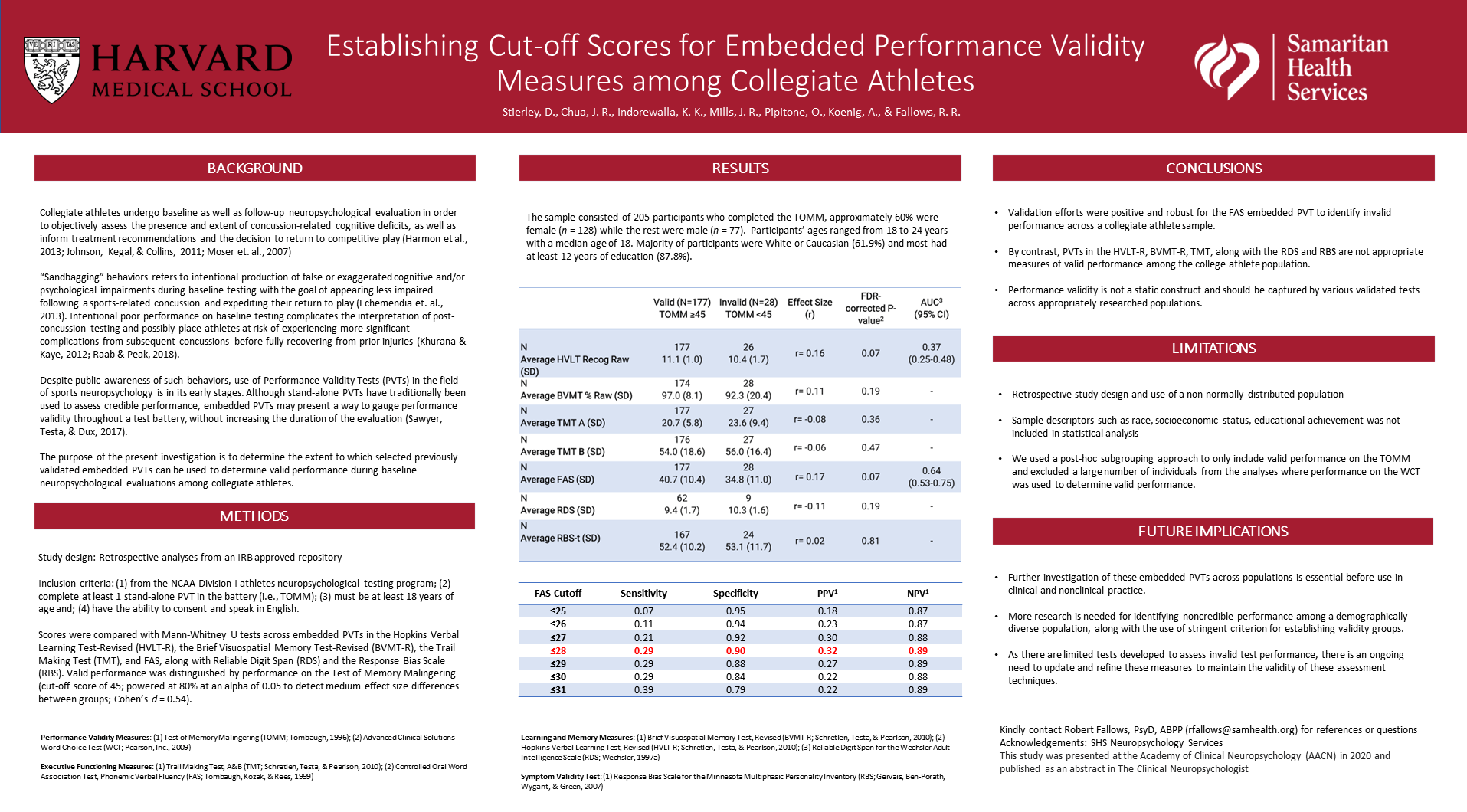Scientific Abstract
Background: Collegiate athletes undergo baseline as well as follow-up neuropsychological evaluations to objectively assess the presence and extent of concussion-related cognitive deficits, as well as inform treatment recommendations and the decision to return to competitive play (Harmon et al., 2013; Johnson, Kegal, & Collins, 2011; Moser et. al., 2007). “Sandbagging” behaviors refers to intentional production of false or exaggerated cognitive and/or psychological impairments during baseline testing with the goal of appearing less impaired following a sports-related concussion and expediting their return to play (Echemendia et. al., 2013). Intentional poor performance on baseline testing complicates the interpretation of post-concussion testing and possibly place athletes at risk of experiencing more significant complications from subsequent concussions before fully recovering from prior injuries (Khurana & Kaye, 2012; Raab & Peak, 2018). The purpose of the present investigation is to determine the extent to which selected previously validated embedded PVTs can be used to determine valid performance during baseline neuropsychological evaluations among collegiate athletes.
Methods: Retrospective analyses from an IRB approved repository.
Results: 205 participants consisted of approximately 60% were female. Participants’ ages ranged from 18 to 24 years; median age was 18. Participants were mostly White (61.9%) and had at least 12 years of education. Scores were compared using the Mann-Whitney U tests across embedded PVTs in the following: Hopkins Verbal Learning Test-Revised (HVLT-R), Brief Visuospatial Memory Test-Revised (BVMT-R), Trail Making Test (TMT), and FAS, Reliable Digit Span (RDS) and Response Bias Scale (RBS). Valid performance was distinguished by performance on the Test of Memory Malingering (cut-off score of 45).
Conclusions: Embedded PVTs in HVLT-R, BVMT-R, and TMT, along with RDS and RBS are not appropriate measures of valid performance among the college athlete population. The FAS yielded an optimal cut-off score of 28 with a specificity of .90 and sensitivity of .29. Caution should be used when relying on embedded PVTs for athlete populations.
Search posters

